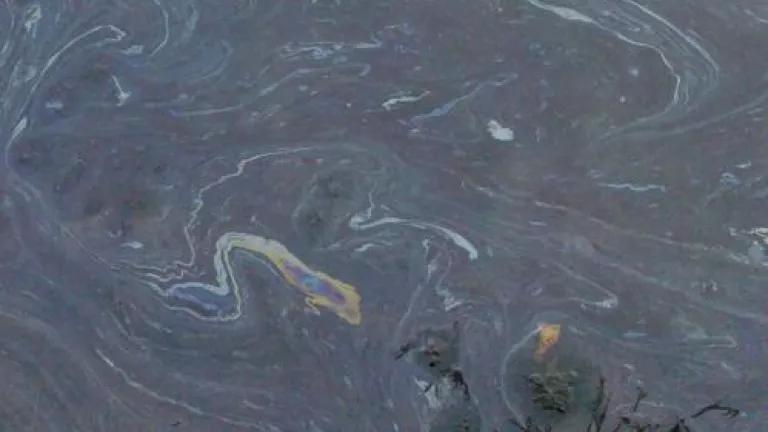
Photo of Kalamazoo River taken on July 19, 2011 courtesy of Beth Wallace at the National Wildlife Foundation
A year-long effort to clean up the largest tar sands spill in U.S. history has established one thing – raw tar sands crude is unlike anything we’ve had in our pipelines before. Last year, Enbridge’s Lakehead pipeline spilled over 840,000 gallons of raw tar sands into the Kalamazoo River watershed. Since then, the Environmental Protection Agency (EPA) has been struggling to deal with the new challenges that a tar sands spill present. EPA originally set a September 2010 deadline to clean up the spill. Ten months later, EPA officials now say that a full cleanup could take years. The Kalamazoo spill is a stark warning of the risks that TransCanada’s proposed Keystone XL tar sands pipeline poses to the Yellowstone River, the Ogallala Aquifer and the nearly two thousand other rivers, streams and water bodies that it would cross.
Raw tar sands bitumen is nearly solid at room temperature and must be diluted with toxic natural gas liquids to create the thick sludge that travels in high pressure pipelines. This sludge is between fifty and seventy times as thick as conventional crude oil. When spilled, the light natural gas liquid in the tar sands vaporizes, creating a toxic flammable gas that poses a health hazard to emergency responders and nearby landowners. The bitumen, which is heavier than water, sinks into rivers and mixes with sediments. Bitumen contains significantly more heavy metals than conventional crudes and does not biodegrade.
What is the status of the spill? Cleanup crews have recovered 766,000 gallons of tar sands crude oil, 113,000 cubic yards of contaminated soil and debris, and over 15 million gallons of oily water so far. Despite all of this work, over 200 acres are still contaminated with tar sands oil. Much of this is in the form of submerged oil that has contaminated the beds of Talmadge Creek, Morrow Lake and the Kalamazoo River.
Conventional spill response measures cannot recover this submerged oil. EPA has been forced to improvise, using extreme measures like chain dragging riverbeds to get submerged oil into the water where it can be recovered.
EPA’s on-site spill coordinator Mark Durno summed it up, “Where we thought we might be winding down our piece of the response, we’re actually ramping back up. The submerged oil is a real story -- it’s a real eye-opener. … In larger spills we’ve dealt with before, we haven’t seen nearly this footprint of submerged oil, if we’ve seen any at all.”
On the anniversary of the worst tar sand spill in U.S. history, the House of Representatives is considering a measure that would expedite the approval of the Keystone XL tar sands pipeline. Congress is considering this bill despite being told by the Administrator of the Pipeline and Hazardous Materials Safety Administration (PHMSA) that there were no regulations in place to ensure the safety of tar sands pipelines. Meanwhile, the State Department’s latest environmental review of Keystone XL assumes that tar sands crude will behave like conventional crude when spilled.
A year after the Kalamazoo spill, the Obama Administration should know better.
Photo of Kalamazoo River taken on July 19, 2011 courtesy of Beth Wallace at the National Wildlife Foundation




